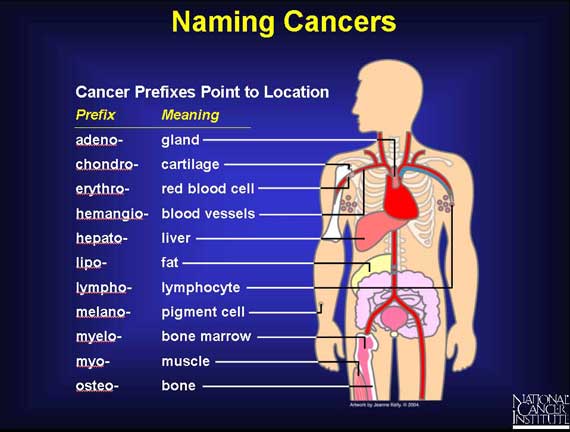|
Scientists use a variety of technical names to distinguish the many different types of carcinomas, sarcomas, lymphomas, and leukemias. In general, these names are created by using different Latin prefixes that stand for the location where the cancer began its unchecked growth. For example, the prefix "osteo" means bone, so a cancer arising in bone is called an osteosarcoma. Similarly, the prefix "adeno" means gland, so a cancer of gland cells is called adenocarcinoma--for example, a breast adenocarcinoma.

< Previous | Index | Next Slide > |